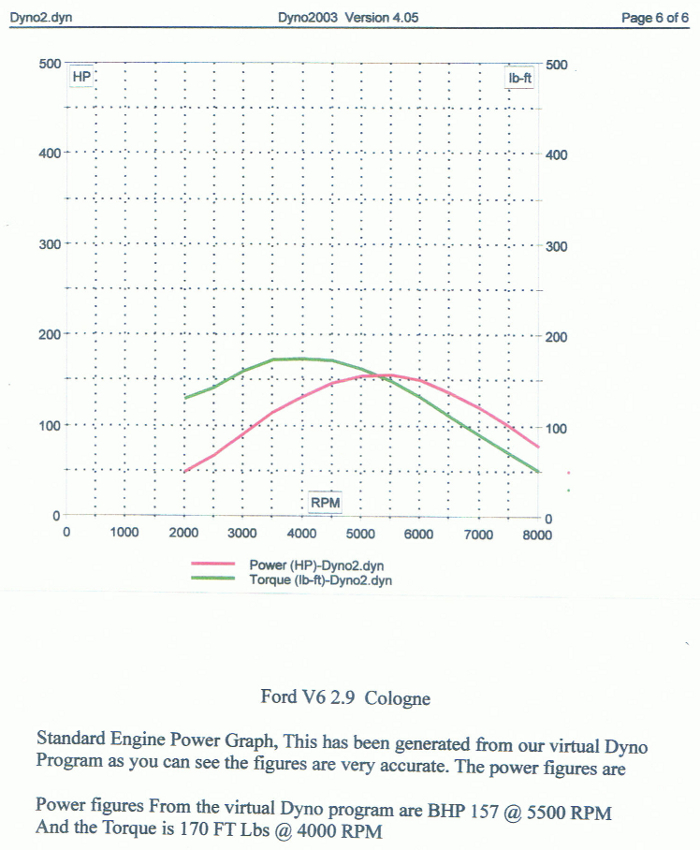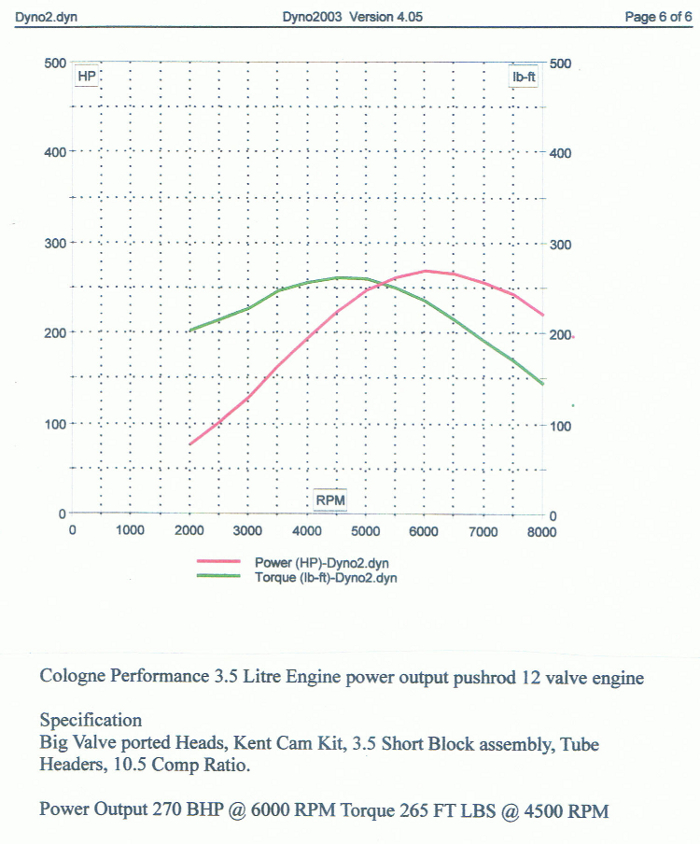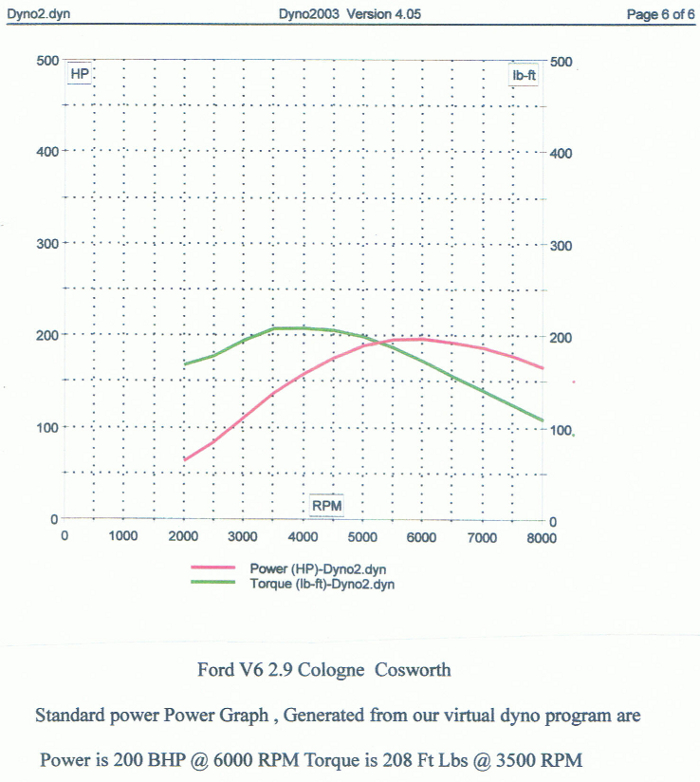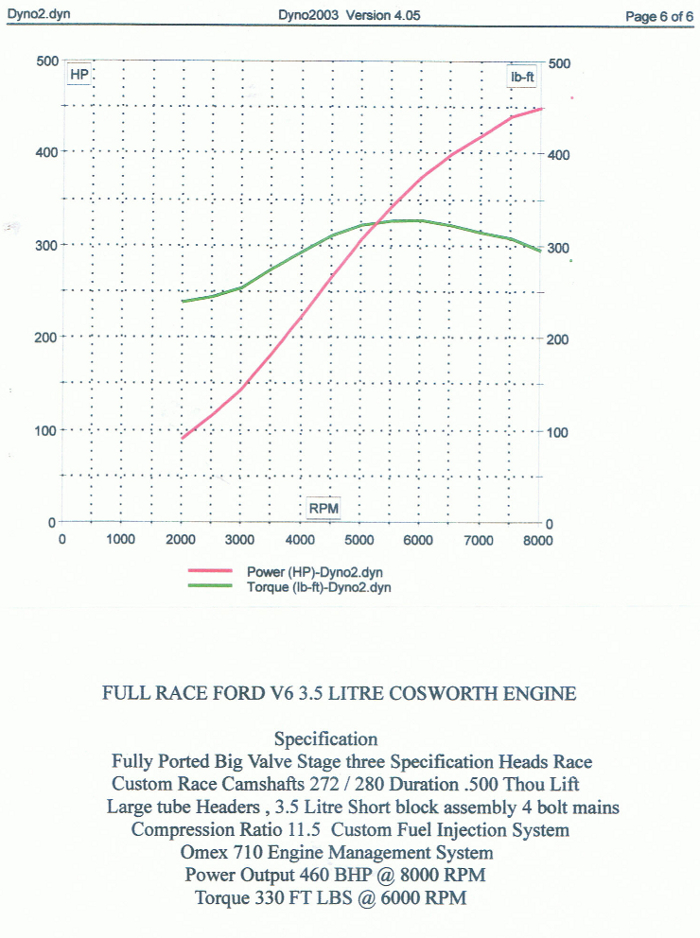Sample Power Data
Just to give you an idea of what can
be achieved in the real world, we have used the same computer modelling
techniques that have worked so well in our development of performance
packages for the TVR family of engines, to yield power graphs for both
the standard and modified Cologne V6, plus the Cosworth.

Compare this generated power curve and BHP/torque data with that quoted
by Ford in its car brochures for the years 1990 through to 1992.

The above power outputs are for an Ultimax-based V6 Cologne. Note the torque spread achieved by the stroker crank conversion.

These are the baseline power levels
for the Cosworth V6 in standard trim. Interestingly, this engine was
only ever offered in the Granada and Scorpio V6 saloons, hatchbacks and
estates - mated to an automatic transmission, with no manual 'box as a
listed option. Though the Cologne V6 was dropped from the Scorpio line
with the arrival of the 2.3 litre DOHC balancer-shaft four, the
Cosworth remained in the range a while longer.

Again, compared to the standard Ford specification of this engine, you
can see how the Ultimax long stroke crank bodily shifts the torque
curve upwards, as well as pushing the BHP peak beyond 300, which only
starts to fall off after 6000 rpm - a full 1000 rpm higher than the
'factory' trim Cosworth.

And now for the big one....a full race 3.5 litre Cosworth with all the
trimmings (well, almost all...). With this configuration, the power
curve just keeps on steadily climbing all the way up to 8000 rpm. The
torque curve is also largely flat, and stays on or above the 300 lb-ft
mark from 4000 rpm up to the engine's notional top end of 8000.